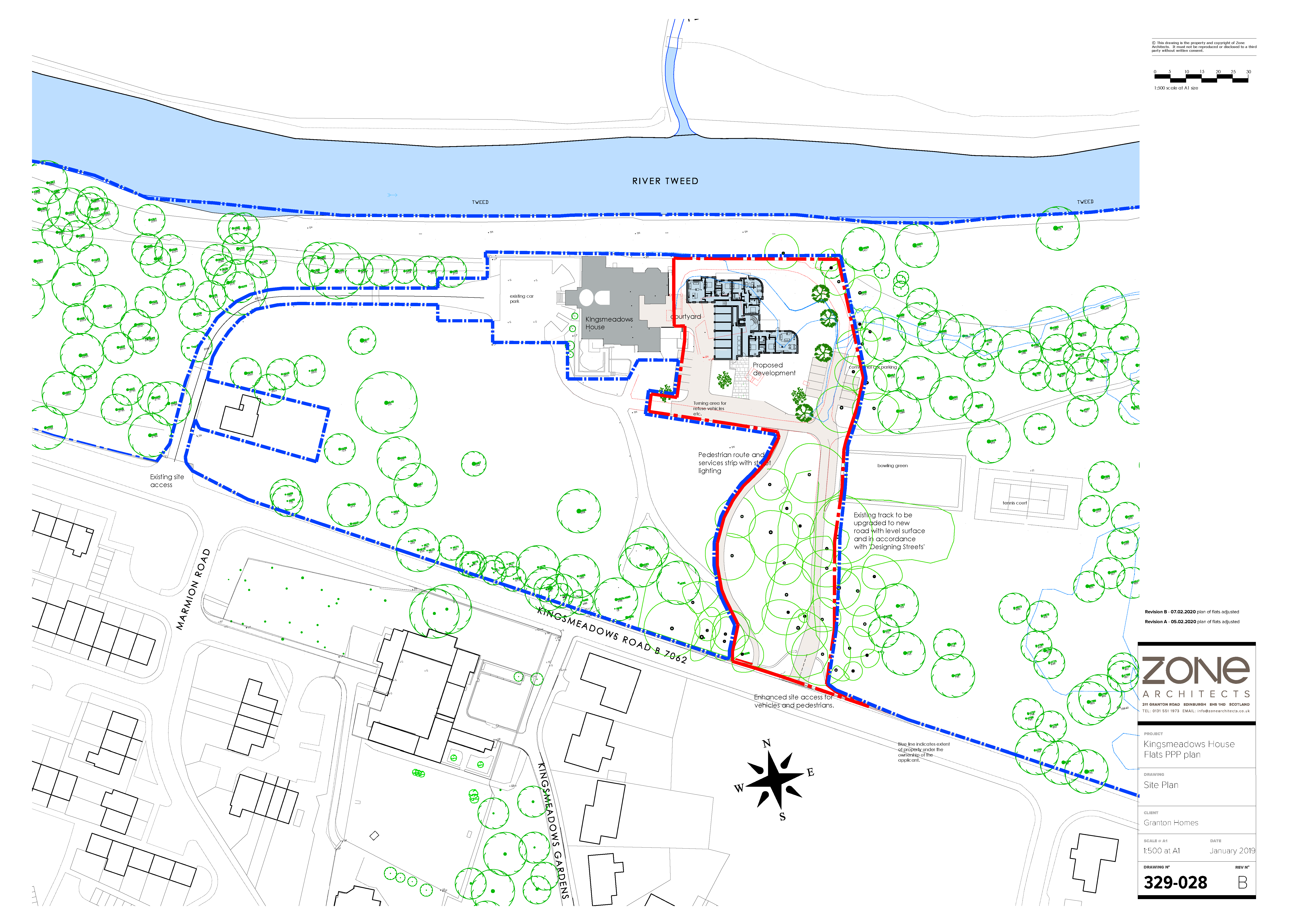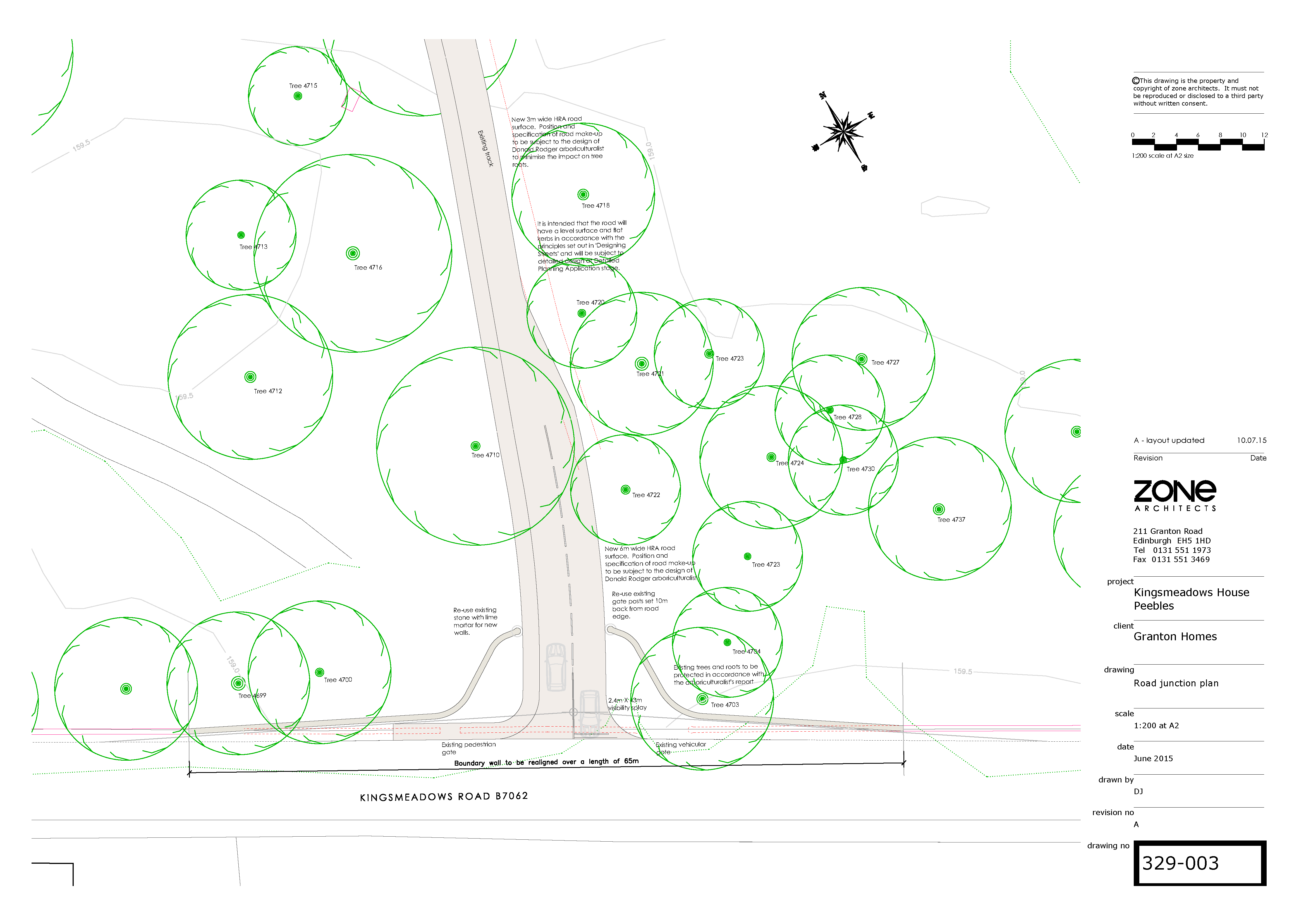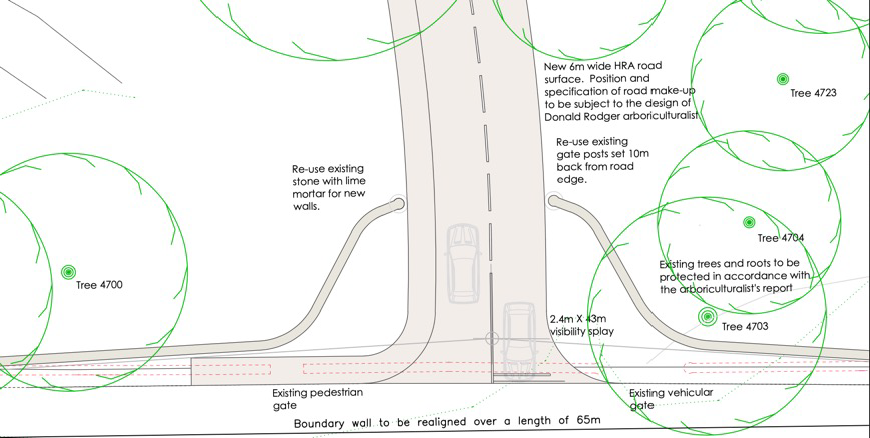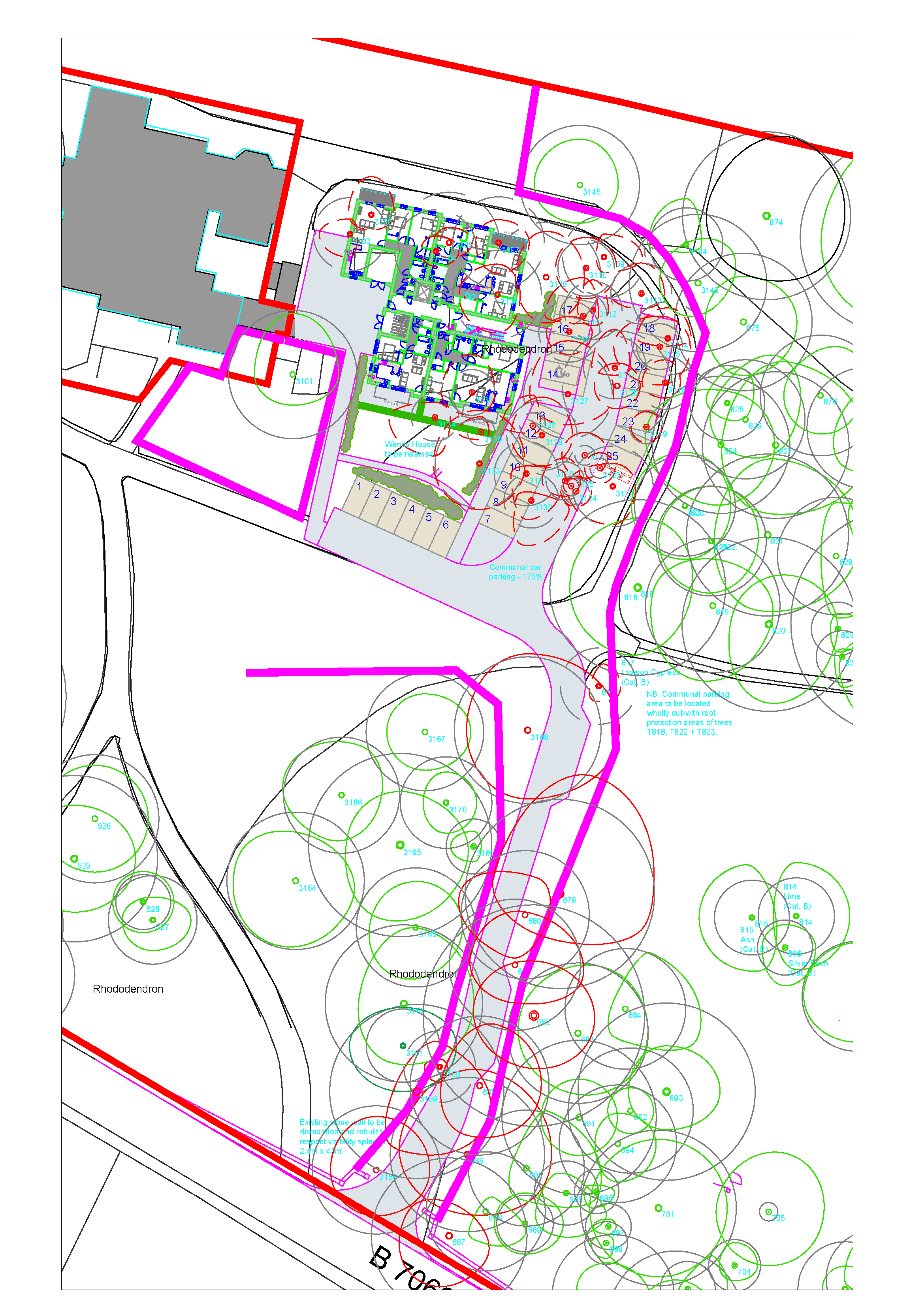The Estate Management Plan [4.2] tells us that 46 trees are proposed to be felled.
The relevant standard is British Standard 5837:2012 ‘Trees in Relation to Design, Demolition and Construction - Recommendations’ (the ‘Tree Standard’).
Central to understanding the Tree Standard is the concept of a Root Protection Area (‘RPA’):
“3.7 root protection area (RPA) – layout design tool indicating the minimum area around a tree deemed to contain sufficient roots and rooting volume to maintain the tree’s viability, and where the protection of the roots and soil structure is treated as a priority” [Tree Standard, pg 4]
We can see from the diagram above that around a dozen trees have RPAs (grey circles) overlapping the pink development boundary.
This is of concern because the Tree Standard goes on to say:
“5.3.1 The default position should be that structures [including roads and paths] are located outside the RPAs of trees to be retained.” [Tree Standard, pg 13]
It isn’t just digging into root systems or directly building on them that is the problem.
Operating heavy machinery, parking, placing heavy building materials (even temporarily) … all of this can damage the RPAs:
“5.3.2 The cumulative effects of incursions into the RPA, e.g. from excavation for utility apparatus, are damaging and should be avoided.” [Tree Standard, pg 13]




